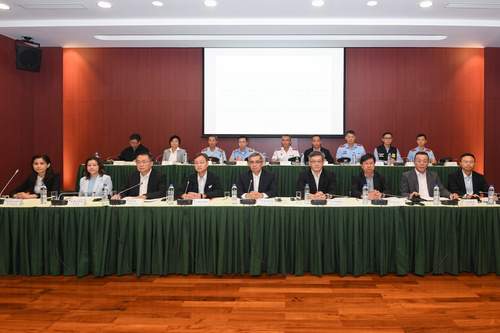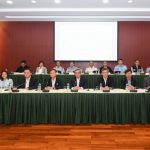 The Government holds a press briefing to conclude the civil protection efforts regarding super typhoon Mangkhut.
The Government holds a press briefing to conclude the civil protection efforts regarding super typhoon Mangkhut.
The civil protection efforts in preparing for the passage of Typhoon Mangkhut were essential in order to reduce the negative impact of the storm in the community, as intended by the Government, said today the Secretary for Security, Mr Wong Sio Chak.
The Chief Executive’s review of emergency preparedness measures and the concerted effort from the community contributed to reduce and minimise typhoon-related economic losses, injuries and damages.
Secretary Wong made the remarks today during a briefing to summarise the work carried out by the civil protection management team in preparation for, and response to, the impact of Typhoon Mangkhut. The powerful storm brought adverse weather conditions to the Pearl River Delta, including Macao, over the past weekend.
The public’s level of understanding regarding public emergency situations and the community’s full cooperation with the Government helped minimise the disruption wrought on Macao by the severe storm, Mr Wong stated.
Typhoon Signal No.10 – the highest category in the city’s five-level typhoon warning system – was in place for nine hours on Sunday. It was the longest period of time since 1968 that such a signal had been in active use.
During today’s briefing, Mr Wong shared with reporters his assessment of some of the measures implemented to face Typhoon Mangkhut. They included the provision, for public use, of parking spaces in Government-owned car parks and those located at hotel resorts, which helped prevent damages to privately-owned vehicles.
Moreover, a citywide suspension of gaming operations and the closure of mainland-Macao boundary crossings significantly lowered the traffic load during the most intense period of the powerful storm, ensuring the safety of the general public, of visitors to Macao and of casino employees, said the Secretary.
Mr Wong said additionally that the Government’s decision to suspend today public services – the exception being the civil protection system – and to close schools also helped minimise the traffic load, which was critical to facilitate the removal from the streets, on the first day after the storm, of all typhoon-related debris and waste.
During the briefing, Secretary Wong acknowledged there was room for improvement in some areas. They included: i) strengthening education efforts on the Government’s evacuation alert system, as some people living in low-lying areas refused to be evacuated during the passage of Typhoon Mangkhut; ii) enhancing promotion efforts to warn tourists not to take any unnecessary risks by trying to reach unsafe areas during adverse weather conditions; and iii) strengthening the effectiveness of the response mechanism aimed at rapidly debunking rumours.
The Commissioner-General of the Unitary Police Service and commander of the joint civil protection operations, Mr Ma Io Kun, also joined the briefing. He gave a detailed report on the work carried out by the civil protection management team during the typhoon period.
Due to the serious threat brought about by Typhoon Mangkhut, the Civil Protection Operations Centre had been activated fully since 9pm on Saturday (16 September). At the same time, the Government also put in motion an evacuation plan for the city’s low-lying areas.
The pre-planned alert system, the first of its kind in Macao, helped evacuate to safety more than 5,650 people living in low-lying areas.
During the typhoon period, a total of 1,343 people took refuge in the Government’s network of 16 shelter centres set up across the city.
Today’s press briefing also provided updates on the post-typhoon clean-up work on the areas most affected by Typhoon Mangkhut, and the progress on emergency repairs of infrastructure for electricity supply.


